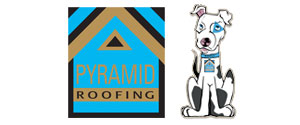- Do you subscribe to Dharma Dog Training’s Newsletter? You should.
- A Unique Campaign from The Humane Society of the United States
- Rabid bats in Omaha- Stay safe, prepared with these tips
- Springtime Activities in Omaha
- Mill Dog Monthly from Bailing Out Benji
- World Spay Day, Legislative Alert in Nebraska
- Attend the Nebraska Rescue Council’s monthly meeting this Saturday
- Five Hard-to-Ignore Reasons to Adopt!
- Paws in Pink to Benefit Breast Cancer Foundation
- VCA, Inc. Acquires MidWest Vet Specialists from Kansas State University
The Best Bed to Help Calm Your Dog

Dogs really are our best friends. They comfort us when we are sad, and give pure, unconditional love.
It is a wonderful thing, to share your life with a dog. They enrich our lives in so many ways, and you will never be the same, after having a dog in your home.
Sometimes however, dogs can get anxious just like we can. It can be triggered by many things, including noises, separation from their family, or changes within a household.
There are several things we can do to help reduce anxiety in our canine companions.
Let’s have a look at how we can help them.
Anxiety and Dogs
Dogs can suffer with anxiety just as humans can, although the reasons are usually different from human concerns.
The most common forms of anxiety are seperation, fear and aging.
Separation anxiety is very common, and these dogs become agitated when separated from their family, or one person in particular. They can become disruptive and destroy blankets and furniture in their agitation, or they can soil in the house when they are otherwise house trained.
Fear anxiety can be related to many different things, and it can be hard sometimes to work out exactly what that is. The most common fear anxiety is noise phobia, in particular thunder and fireworks, but any noise can cause anxiety. Sometimes certain people, or pieces of clothes, or even other animals can cause a fear reaction.
Anxiety is pretty commonly seen in dogs as they age. Dogs can have a condition called Cognitive Dysfunction, which is very similar to dementia in humans, and can cause confusion and memory problems which lead to anxiety.
The symptoms of anxiety vary greatly from individual to individual, but the most common ones are destructive behaviour, aggression, urinating and / or defecating in the house, barking more than usual, panting, dribbling, and restlessness, often in the form of panting.
It is best to consult a vet about anxiety behaviours, and they can recommend behaviour therapy, anti anxiety medication, or a combination of the two.
However, there are some things you can do at home as well.
A Secure Space For Your Dog
If your dog suffers with anxiety, then it is vital they have somewhere that they feel secure that they can go to when they are feeling anxious.
There are some dog beds which are shown to help reduce anxiety in anxious dogs.
The most common types of dog beds are the doughnut type ones, like the calming Bobby bed, or the igloo type.
The doughnut type beds are a round or oval bed usually, with a slightly raised side. They are made from a soft, comforting material that is pleasant for your dog to burrow into and feel secure.
This type of bed also has raised sides, so your dog can feel protected all around. These beds also allow your dog to curl up, which is usually a protective position for them, and feel completely tucked in on all sides, and therefore safe from any anxiety triggering stimuli.
The igloo type beds are a type of bed that is a dome with an entrance in the front, literally the shape of an igloo. These beds allow your dog to crawl inside, and be protected all around and from the top. It is also a bit darker within these beds, which can also help reduce anxiety.
It is also worth considering crate training your dog. A crate, if used correctly, is seen as a safe, secure place by your dog, where they can retreat to when everything gets a bit much and they need to feel soothed. The crate should have a bed within in, and some blankets to help your dog create a nest. You can also consider covering the top of the crate so it is a bit darker, and therefore more secure.
What Other Beds Are There?
There are many types of dog beds available. We have discussed the doughnut type and the igloo type, but there are more than just these.
The traditional plastic types are still widely available, these are made of a hard plastic with raised sides and a dipped area for entrance. The bottom should be filled with a soft mattress or blankets. These types of beds can also help your dog feel secure, as the edges are quite highly raised, and can add to that protective feeling.
Mattress type beds are also quite commonly seen, and are useful for larger dogs, or dogs that like to stretch out. However, these don’t have the same secure feeling as beds with sides.
How Else Can You Help Your Dog?
The best thing you can do if you have an anxious dog is to take it to the vet. Your vet will be able to examine your dog and let you know if there is any medical reason for the anxiety.
They can then make some recommendations, usually including behaviour therapy, and sometimes anti anxiety medication.
You can also find some products with pheromones in that can help to calm your dog. These are available as sprays, plugins, collars and wipes to aid your dog in feeling calmer.
There are some reports from dog owners that CBD oil helps treat the anxiety in their dog, although no official studies have been done yet. If you are thinking of trying this route, always talk to your vet first, as the CBD oil may interact with some other medications your pet is already on.
Make sure your dog is properly exercised. When a dog is not being exercised enough, the pent up energy can convert into anxiety. This is commonly seen in highly intelligent, working type dogs like German Shepherds and Border Collie.
It is important to know exactly what the traits are of a breed before taking that dog on, and ensure it matches your lifestyle, otherwise you will be letting that dog down.
When your dog is a puppy, ensure to socialise them thoroughly. This can help them get used to all sorts of situations and noises, and prevent problems like this in later life. Enlist the help of a registered and licensed dog trainer or behaviorist to help you achieve good socialisation.
Latest News
-
Choosing the Right Pet for Your Lifestyle
Are you thinking about getting a pet but unsure what...
- Posted 1 week ago
- 0
-
How to Make Your Rescue Pet as Comfortable as Possible
Did you bring home a new pet from a shelter...
- Posted 1 month ago
- 0
-
How Having A Pet Can Change Your Life
Having a pet can open your heart in ways that...
- Posted 6 months ago
- 0
-
How To Improve The Life Of Your Senior Pet
Do you have an elderly fur baby and want to...
- Posted 7 months ago
- 0
-
Springtime Activities To Enjoy With Your Furry Friends
Are you preparing for warmer weather and want some ideas...
- Posted 8 months ago
- 0
-
Pros And Cons Of Microchipping Your Pets
Have you considered whether your pets should be microchipped and...
- Posted 9 months ago
- 0
-
The Best New Fun Toys For Dogs And Cats
The Best New Fun Toys For Dogs And Cats Did...
- Posted 9 months ago
- 0


















You must be logged in to post a comment Login